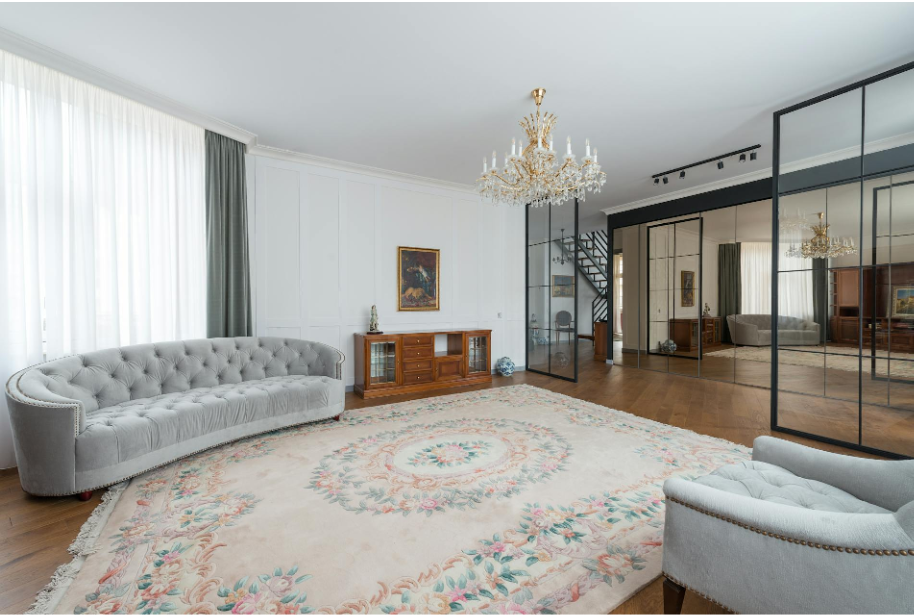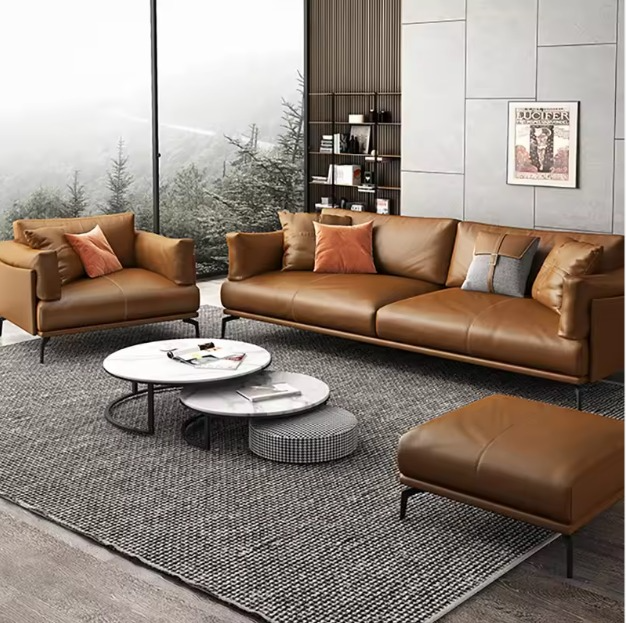Moving into a bigger home is an exciting step. You finally have more room to breathe, decorate, and make the space your own. But with that extra space comes new responsibilities and challenges. A larger home needs more upkeep, thoughtful planning, and smart adjustments to keep it both comfortable and efficient. From managing higher energy needs to organizing extra square footage, you’ll need to make some tweaks to ensure your new home serves you well.
So, let’s have a look at how you can make sure this bigger space doesn’t just look beautiful but is functional, too.
Upgrade Your Lighting Plan
Lighting plays a huge role in how a bigger home feels. With larger rooms and higher ceilings, a single light fixture is rarely enough. Instead of relying on overhead lighting alone, think about layering different types. Ceiling fixtures can provide general brightness, while wall sconces or floor lamps create softer accents. Task lighting in kitchens, home offices, or reading corners ensures that every activity has the right amount of light.
A bigger home also means more light bulbs, which can drive up energy use. Switching to LED bulbs is a smart move because they last longer and consume far less electricity than traditional options. With thoughtful planning, your lighting can make each room feel inviting without leaving dark, unused corners.
Ensure Your AC Is the Right Size
Comfort is one of the most important parts of living in a bigger home, and your air conditioner plays a big role in that. A system that is too small will struggle to cool every room, running nonstop without ever making the space comfortable. On the other hand, an oversized system will turn on and off too often, wasting energy and wearing out faster. Choosing the right air conditioner is about balance, and it starts with having a professional assess your home’s square footage and layout.
The type of system also matters. Central air is common, but larger homes can benefit from zoning systems that let you control the temperature in different areas independently. This prevents cooling empty rooms and helps keep energy costs under control. Beyond choosing the right equipment, proper installation is critical. A professional can make sure the system is placed, sealed, and set up correctly, giving you efficiency and reliable comfort for years.
Create a Cleaning and Maintenance Schedule
A larger home gives you more space to enjoy, but it also comes with more surfaces, corners, and systems that need care. Without a plan, cleaning can quickly become an exhausting task. A simple way to manage this is by setting a routine. Weekly tasks like dusting, vacuuming, and wiping down bathrooms keep the basics covered. Monthly check-ins can include deeper cleaning, like washing windows or refreshing upholstery.
Maintenance is just as important as cleaning. Larger homes often have more complex HVAC systems, plumbing, and appliances. Scheduling routine inspections helps prevent small issues from becoming expensive problems.
Focus on Energy Efficiency
Larger homes naturally use more energy, but that doesn’t mean your bills need to skyrocket. A few simple steps can make a big difference. Adding insulation in the attic and sealing any gaps around windows and doors helps keep air from escaping. This makes it easier to maintain a steady temperature and reduces the strain on your heating and cooling system.
Upgrading to energy-efficient appliances also helps cut down on long-term costs. Refrigerators, dishwashers, and washing machines designed to use less power and water can keep utility bills manageable. Smart thermostats are another valuable tool. They let you program heating and cooling to match your schedule, so you’re not wasting energy when no one is home.
Rethink Furniture and Layouts
Moving into a bigger home often makes your old furniture look small or mismatched. A sofa that filled your previous living room might now seem lost in a larger space. This is the perfect opportunity to rethink your layout and consider new pieces that complement the scale of the rooms. Larger statement furniture, like sectional sofas or expansive dining tables, can make the space feel balanced instead of empty.
Open layouts can also present challenges. Instead of filling them with random pieces, use rugs, bookcases, or accent chairs to create zones. This helps define areas for different activities, such as lounging, dining, or working, without losing the flow of the room. A bigger home gives you flexibility, but careful planning keeps it from feeling either cluttered or too sparse.
Prioritize Safety and Security
A larger property often comes with more entry points, windows, and outdoor spaces to keep track of. That makes safety and security an important focus. A good security system offers peace of mind, with features like cameras, alarms, and remote monitoring through your phone. For outdoor areas, motion-sensor lighting is a simple but effective way to deter intruders and add visibility at night.
Inside the home, safety checks are just as vital. Larger homes often have multiple smoke and carbon monoxide detectors. Testing them regularly and replacing batteries keeps them reliable. If your new space has features like fireplaces or multiple staircases, extra precautions such as guards and handrails may also be needed.
Enhance Outdoor Spaces
More space inside often means more to enjoy outside too. Patios, decks, and backyards can add a whole new dimension to your home life. Investing in quality outdoor furniture makes these spaces more inviting, encouraging you to use them for dining, entertaining, or simply relaxing.
Landscaping is another element that adds value and beauty. Well-maintained lawns, trees, and gardens improve curb appeal and create an environment you’ll want to spend time in. Outdoor lighting extends the usability of your yard into the evening, while also boosting security.
Personalize the Space with Design Touches
Large rooms can feel impersonal if left bare. Adding personal design touches makes your home feel warm and welcoming. Accent walls painted in bold colors, carefully chosen artwork, or custom furniture pieces can bring character to each room.
Personalization also means reflecting your lifestyle. If you love hosting, a dining room designed for gatherings will make the space feel more alive. If you work from home, creating a dedicated office with your style in mind will make it more functional and enjoyable. Bigger homes can sometimes feel too generic, but adding touches that reflect your personality ensures they truly feel like your own.
A bigger home is more than just added square footage—it’s a chance to expand how you live. The beauty of moving into something larger is that it gives you room to grow into your routines, your style, and even your goals. Think of it as a fresh canvas where you can shape not only the environment but also the way you experience daily life. With a little planning and intention, your larger home can become a place that supports both comfort and possibility.














Leave a comment